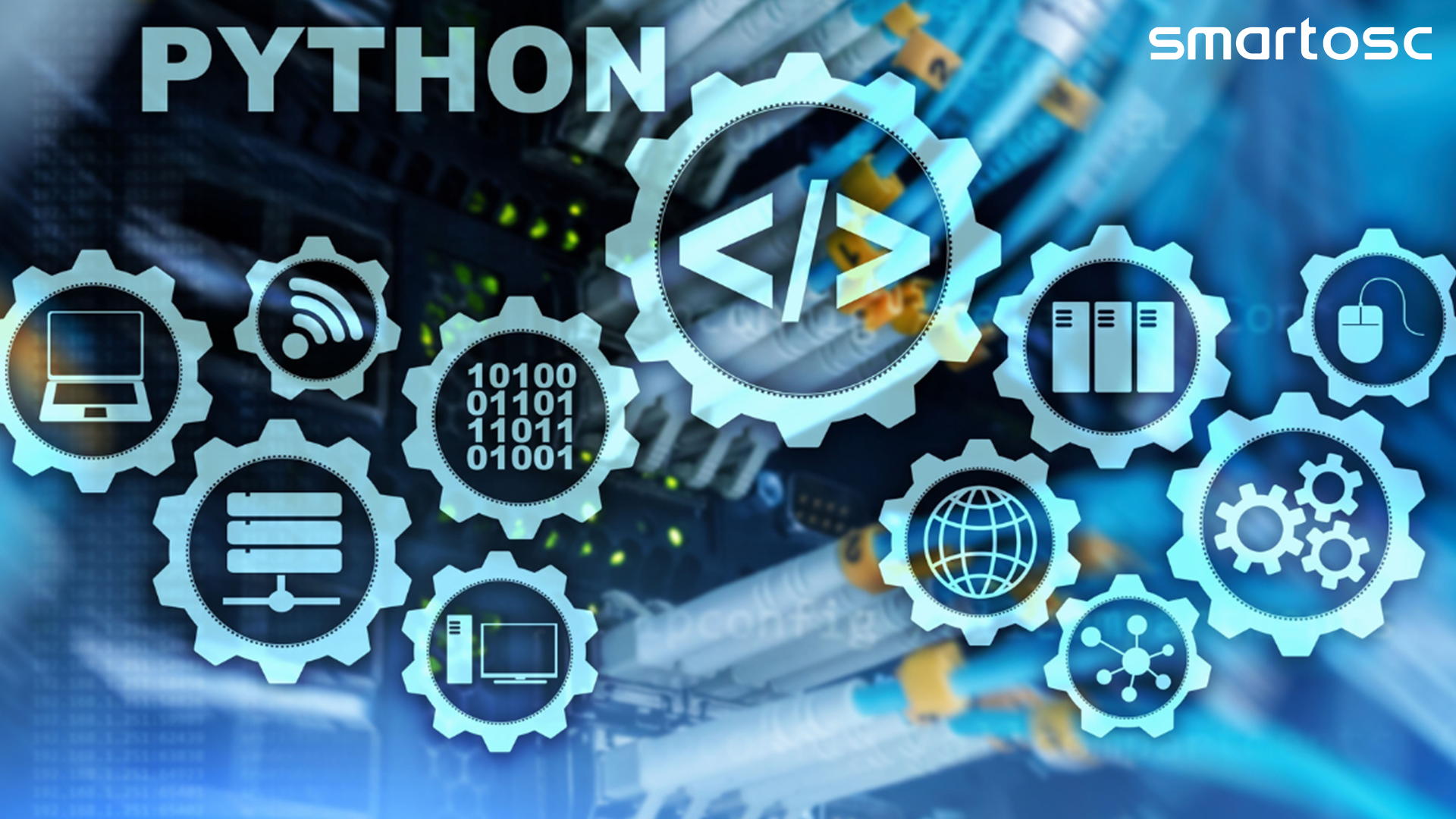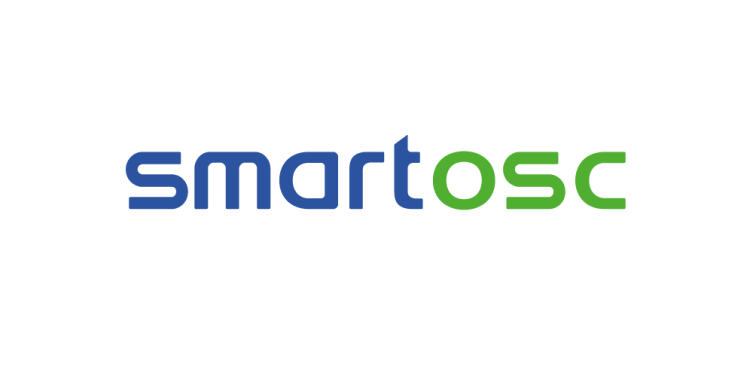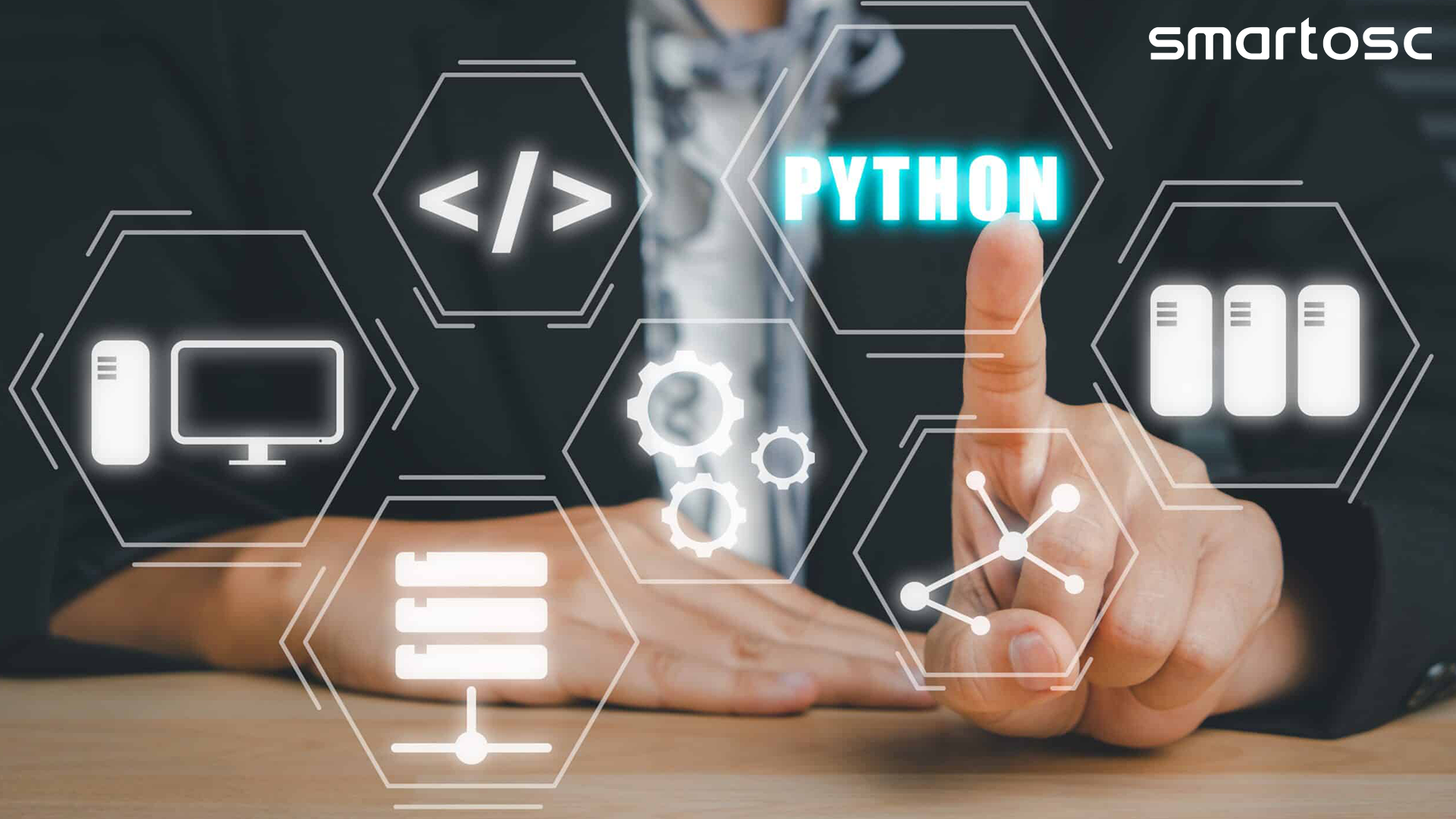In recent years, Python has become one of the most widely used programming languages in the world. It can be applied to any field, from machine learning to web development to software testing. So what is Python? Why is Python widely favored? Let’s explore through the following article by SmartOSC Career.
What is Python?
Python is a high-level, general-purpose programming language that is widely used for building websites, developing software, automating tasks, and analyzing data. Python is considered a general-purpose language because it is used to develop a wide variety of applications and is not specific to any particular problem. The ease of learning and use, along with a strong developer community, have made Python one of the most popular and in-demand programming languages on the market today.
Interesting facts about Python you might not know
Python, one of the most popular and powerful programming languages today, was developed in the late 1980s by Guido van Rossum at the National Research Institute for Mathematics and Computer Science in the Netherlands. Guido van Rossum chose the name Python for this new language based on a popular British television show called Monty Python’s Flying Circus.
Python builds on the foundations of other programming languages such as ABC, Modula 3, Smalltalk, and Algol-68. Python scripts are stored in files with the .py extension, which can contain both HTML tags and Python code.

The creator of Python developed the first Python interpreter in December 1989, originally only as a personal project. Python 2.0, the first version with new features, was released on October 16, 2000. Python 3.0 was then released on December 3, 2008, with more improvements and experimental features.
Python is an open-source scripting language, which means that anyone can download and use it for free. The source code for Python can be accessed and modified as needed for projects. Python is also one of the official languages used at Google.
How is Python used?
Python is used widely in web development and software development, task automation, data analysis, and data visualization. Thanks to its ease of learning, Python has become a daily tool for many non-programmers, including accountants and scientists, for tasks such as financial organization.
Data analysis and machine learning
Python is a key player in the field of data science, allowing data analysts and other professionals to use the language to perform complex statistical calculations, visualize data, build machine learning algorithms, manipulate and analyze data, as well as complete other tasks related to data.
Python supports a variety of different charts for data visualization, including line charts, bar charts, pie charts, and 3D charts. In addition, Python has a number of libraries that allow programmers to write data analysis and machine learning programs more quickly and efficiently, such as TensorFlow and Keras.
Web development
Python is often used to develop the back-end software of a website or application, which includes sending and receiving data from the server, processing data and interacting with databases, routing URLs, and ensuring security. Web development with Python can use frameworks such as Django and Flask. Jobs related to web development using Python include support engineer, Python developer, software engineer, and DevOps engineer.

Automation and software development
If you find that you are performing a repetitive task, you can save time and be more productive by automating it with Python. The code used to create these automated processes is called scripting. In the field of programming, automation is used to check for errors in multiple files, convert files, perform simple mathematical operations, and process duplicates in data.
Python can be used by both beginners to automate simple tasks on a computer. For example, renaming files, searching and downloading content from the network, or sending emails or text messages at a specified interval. In software development, Python provides support for tasks such as build process control, bug tracking, and testing. Thanks to Python, software developers can automatically test new products or features. Some popular Python tools used in software testing are Green and Requestium.
Python’s distinctive features
Python is considered a popular programming language in the programming community for its distinctive features such as:
- It is an interpreted language, processed at runtime by the Python interpreter.
- It supports object-oriented programming features and techniques as an object-oriented programming language.
- It allows users to interact directly with the Python interpreter to write programs as an interactive programming language.
- It is very easy to learn, especially for beginners.
- Python syntax is easy to understand and not complicated, which also makes it popular.
- Python source code is clearly defined and can be easily observed by eye.
- Python code can run on multiple hardware platforms and is compatible with the same interface.
- Users can add low-level modules to the Python interpreter to extend the complexity of the program.
- Python provides an improved structure to support large programs after shell scripts.
Why is Python widely popular?
With its flexibility and ease of use, Python has become popular for many reasons, such as:
- Python has a simple syntax that mimics natural language, making it easier to read and understand. This helps users develop and improve projects faster.
- Python is versatile and can be used for a variety of different tasks, from web development to machine learning.
- Python is beginner-friendly, making it a popular programming language for new programmers.
- Python is open source, so it is free and available for commercial purposes.
- Python’s repository of modules and libraries is vast and growing. These are code packages created by third-party users to extend the capabilities of Python.
- Python has a large and active community contributing to its repository of modules and libraries. This benefits other programmers when they need to find solutions to specific problems.
Strengths of Python
Python has simple and easy-to-understand syntax, making it a suitable programming language for developers with limited experience and attracting a large community of users. Because there are many academics and professors in the community, when developers encounter problems, they can get quick support and don’t have to worry about the complexity of the language.
Python is developed under an open source license approved by OSI, so it is a free language to use and distribute, including for commercial purposes. This helps reduce maintenance costs and developers can share, copy, and customize it. For the Python community, this is an opportunity to share knowledge and experience with newcomers.
Python is said to be very easy to use. Although when developing mobile applications or games, there may be other languages such as C++ or other scripting languages that are easier to use, but Python still gives better results in building server-side applications, automating system building processes, and collecting test data.
Python has many libraries and frameworks to choose from, which is one of the great advantages of Python. From NumPy to TensorFlow, Python libraries are used for everything from data visualization, machine learning, data science, natural language processing, and complex data analysis.
Python has a large library that supports memory management and has a bright design to increase productivity for Python programmers. Thanks to this, they can manage databases, documentation, web browsers, perform unit testing, and many other functions. In addition, Python can be used to develop web applications, desktop applications, complex computing systems, life support management systems, the Internet of Things (IoT), games, and more.
We hope that the information about Python and the interesting facts behind this popular programming language will help you expand your knowledge. You can also refer to the employment opportunities for Python programming at SmartOSC by visiting SmartOSC Careers.






